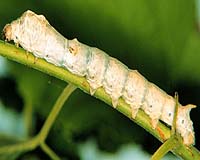 |
Washington DC (SPX) Aug 13, 2010 Scientists have published the first report on a new way of preventing potentially harmful plasticizers from migrating from one of the most widely used groups of plastics. The advance could lead to a new generation of polyvinyl chloride (PVC) plastics that are safer than those now used in packaging, medical tubing, toys, and other products, they say. Their study is in ACS' Macromolecules, a bi-weekly journal. Helmut Reinecke and colleagues note that manufacturers add large amounts of plasticizers to PVC to make it flexible and durable. Plasticizers may account for more than one-third of the weight of some PVC products. Phthalates are the mainstay plasticizers. Unfortunately, they migrate to the surface of the plastic over time and escape into the environment. As a result, PVC plastics become less flexible and durable. In addition, people who come into contact with the plastics face possible health risks. The U. S. Consumer Product Safety Commission in 2009 banned use of several phthalate plasticizers for use in manufacture of toys and child care articles. The scientists describe development of a way to make phthalate permanently bond, or chemically attach to, the internal structure of PVC so that it will not migrate. Laboratory tests showed that the method completely suppressed the migration of plasticizer to the surface of the plastic. "This approach may open new ways to the preparation of flexible PVC with permanent plasticizer effect and zero migration," the article notes.
Share This Article With Planet Earth
Related Links American Chemical Society Space Technology News - Applications and Research
 Research aims at making artificial silk
Research aims at making artificial silkWashington (UPI) Jul 30, 2010 Scientists say they are closer to learning how to make artificial silk that could bring medical and materials advances, but some obstacles remain. Researchers have determined natural silk, stronger for its weight than Kevlar or steel, is "a relatively simple protein processed from water," but exactly how spiders and silkworms produce the material is still a mystery, an article in the jo ... read more |
|
| The content herein, unless otherwise known to be public domain, are Copyright 1995-2010 - SpaceDaily. AFP and UPI Wire Stories are copyright Agence France-Presse and United Press International. ESA Portal Reports are copyright European Space Agency. All NASA sourced material is public domain. Additional copyrights may apply in whole or part to other bona fide parties. Advertising does not imply endorsement,agreement or approval of any opinions, statements or information provided by SpaceDaily on any Web page published or hosted by SpaceDaily. Privacy Statement |